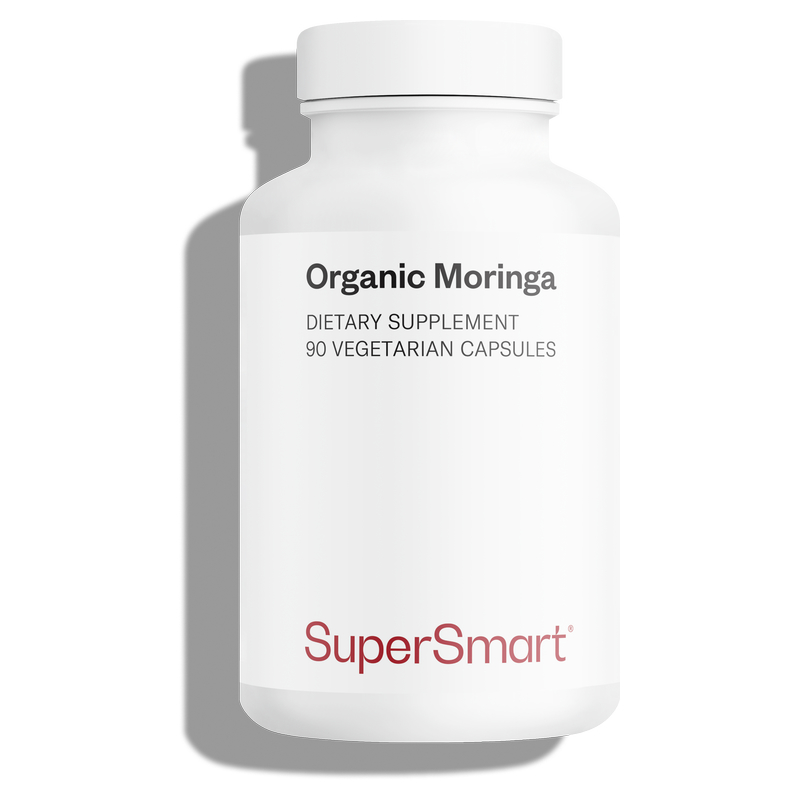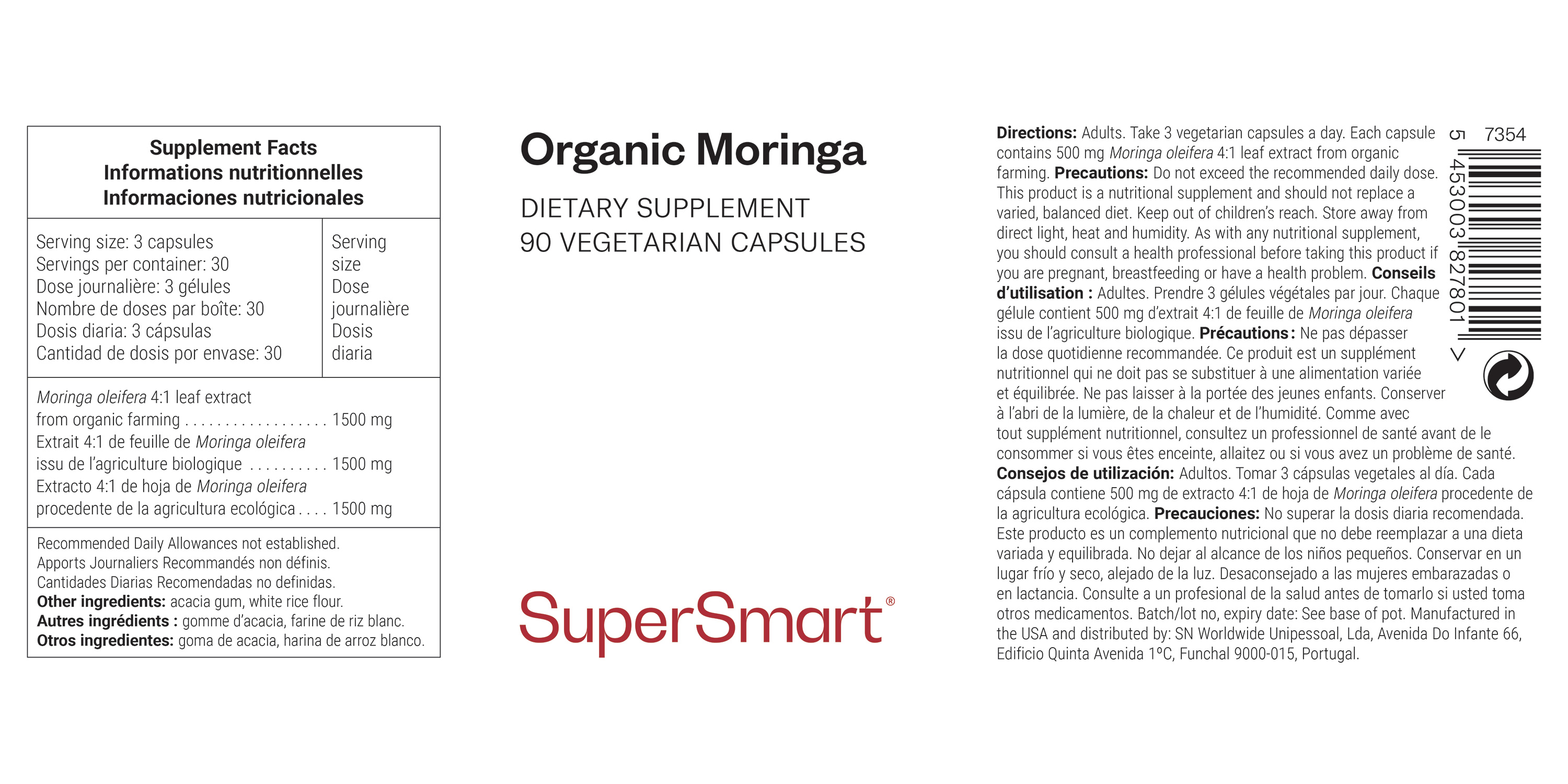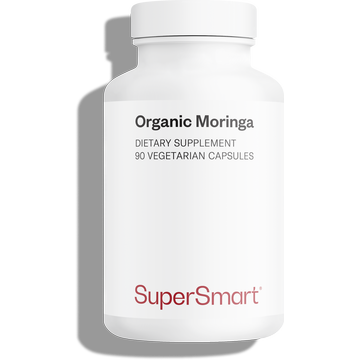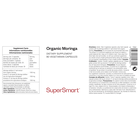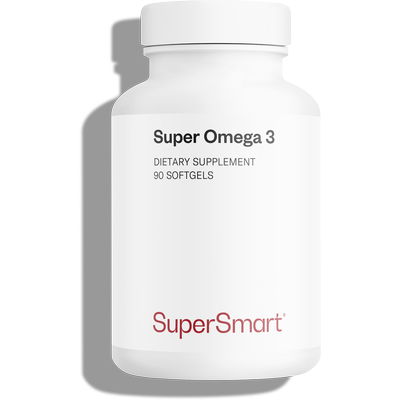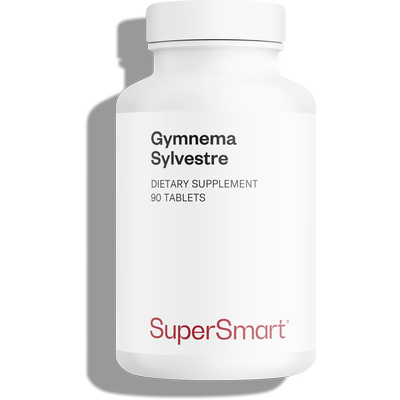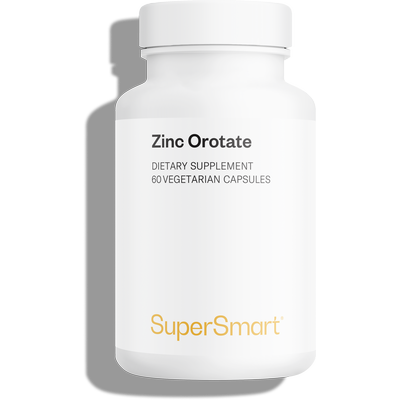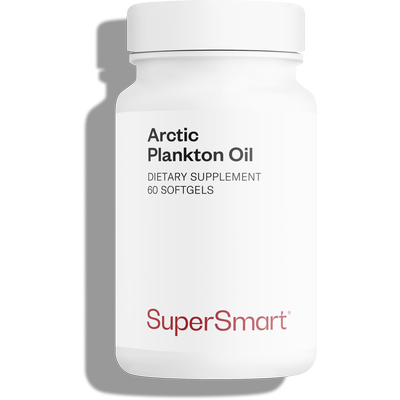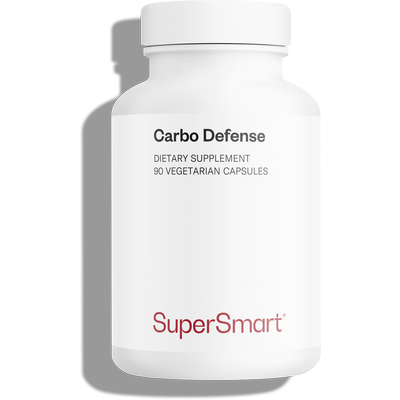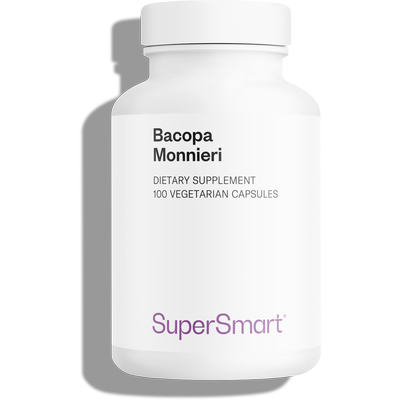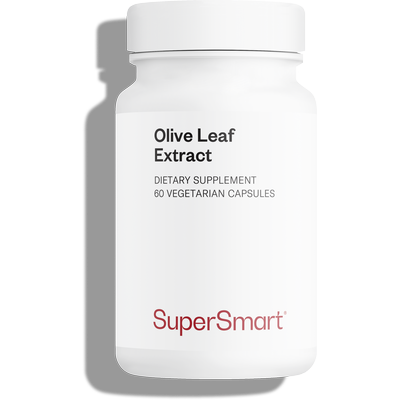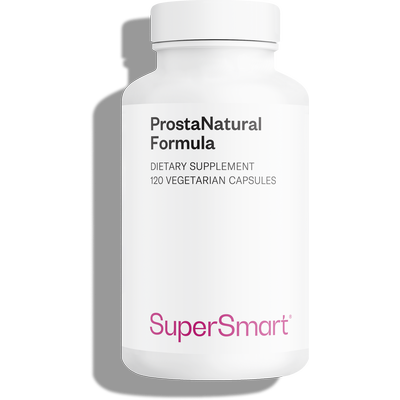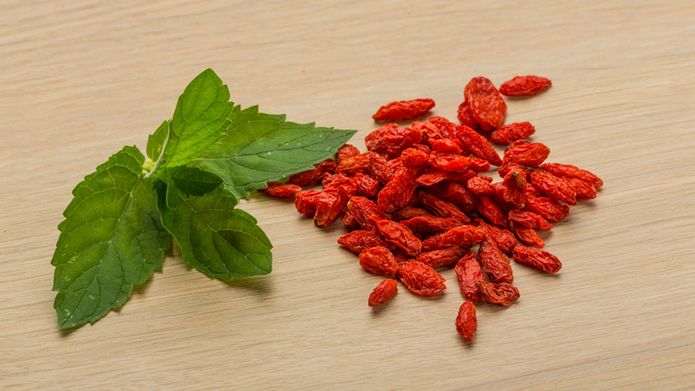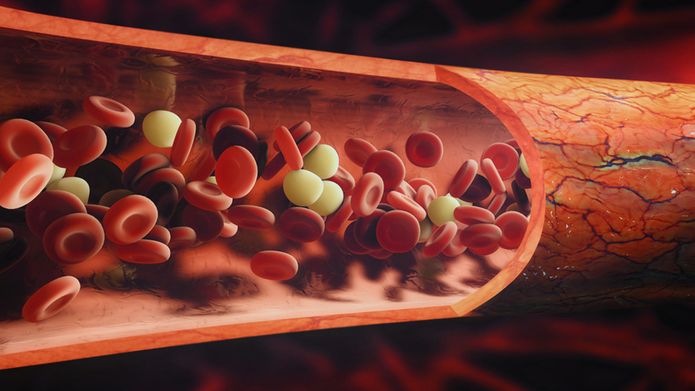Auf Lager
Organic Moringa leaf extract
Ergänzen Sie Ihre Auswahl
Organic Moringa leaf extract ist ein Nahrungsergänzungsmittel von Moringa oleifera, einer Pflanze, die traditionell für ihren außergewöhnlichen Nährwert und ihre Fähigkeit zurReduktion von Zucker und Blutfettwertenanerkannt wird.
Es ist ein wässriger Extrakt aus Moringa-Blättern aus biologischem Anbau.
Was sind die Vorteile von Bio-Moringa?
Das Interesse der wissenschaftlichen Gemeinschaft an Moringa ist sehr groß. Jedes Jahr belegen Dutzende von Studien das therapeutische Potenzial der Blätter (1) und bestätigen damit die über Jahrtausende gesammelten empirischen Erkenntnisse.
Diese Forschung zeigt uns, dass Organic Moringa leaf extract vier Hauptvorteile hat :
- Es hilft, den Blutzuckerspiegel zu senken. . Wie Berberin kann Moringa den Blutzucker im Nüchternzustand und den postprandialen Blutzucker senken. In einer klinischen Humanstudie (2) reduzierte eine 40-tägige Supplementierung den Blutzuckerspiegel bei Teilnehmern mit Typ-2-Diabetes um etwa 30%. Diese Effekte werden als Folge von isothiocyanischen Verbindungen in Moringa-Blättern angesehen. Insbesondere erhöhen sie die Empfindlichkeit des peripheren Gewebes gegenüber Insulin (3) und verringern die Aktivität der intestinalen Sucrase.
- Es wirkt entzündungsbedingten Phänomenen entgegen. . Entzündungen sind eine Abwehrreaktion des menschlichen Körpers, aber sie werden schädlich, wenn sie nachhaltig einwirken. Langfristig löst dieser pathologische Mechanismus viele chronische Erkrankungen aus und verstärkt sie.
Moringa hemmt die Produktion von proinflammatorischen Zytokinen durch Makrophagen und verringert die Aktivität der an der Entzündung beteiligten Gene (4-5). Diese entzündungshemmenden Eigenschaften sind hauptsächlich auf das Vorhandensein von Isothiocyanaten und Terpenoiden zurückzuführen. - Es senkt den Cholesterinspiegel im Blut. . In einer klinischen Humanstudie (6) reduzierte eine 50-tägige Supplementierung den Gesamtserumcholesterinspiegel um 2% und erhöhte den HDL-Cholesterinspiegel (das "gute" Cholesterin) um 7%. Da ein erhöhter LDL-Cholesterinspiegel das reibungslose Funktionieren des Herzmuskels beeinträchtigt, trägt die hyperlipidämische Wirkung von Moringa zu einer besseren kardiovaskulären Gesundheit bei. Diesmal sind es die phenolischen Verbindungen und Flavonoide, die als verantwortlich angesehen werden (7). Insbesondere könnten sie zwei Schlüsselenzyme im Cholesterinstoffwechsel hemmen: Lipase und Cholesterinesterase (8).
- Sie helfen, die Neurodegeneration zu verlangsamen. . Dieser Wirkmechanismus ist wahrscheinlich auf den hohen Gehalt des Extrakts an Polyphenolen und anderen antioxidativen Verbindungen zurückzuführen, die den oxidativen Stress reduzieren können. (9).
Zusammensetzung Organic Moringa leaf extract
Sie haben Fragen? Oder Bedenken?
Moringa ist eine Pflanze, die seit Jahrtausenden in der traditionellen ayurvedischen Heilkunde bekannt, geschätzt und verwendet wird. Sie gehört zur Familie der Moringacae, von denen sie die einzige Art ist. Sie wird in tropischen Regionen und Madagaskar angebaut, vor allem wegen des außergewöhnlichen Nährwerts ihrer Blätter (10-11). Diese enthalten Vitamine (einschließlich Vitamin C, Vitamin B6 und Vitamin B2), Mineralien (insbesondere Eisen und Magnesium), Aminosäuren und wichtige Fettsäuren (12-13), aber auch wertvolle Antioxidantien wie seltene Carotinoide, Flavonoide und Phenole (14).
Mehrere Studien (15-16) haben gezeigt, dass sie für ihre entzündungshemmenden (17), blutdrucksenkenden (18), diuretischen, antimikrobiellen (19), antioxidativen (20), antihyperlipidämischen (21), kardioprotektiven und hepatoprotektiven (22-23) Eigenschaften verwendet werden. Ayurvedische Ärzte schätzen, dass Moringa mehr als 300 Krankheiten verhindern könnte. (24) !
Organic Moringa leaf extract ist ein wässriger Extrakt, der aus den Pflanzenblättern gewonnen wird.
Es enthält 3 Haupttypen von chemischen Verbindungen, zusätzlich zu den bereits erwähnten Vitaminen, Mineralien und Fettsäuren.:
- Polyphenole, einschließlich Flavonoide und Phenolsäuren. Die wichtigsten Flavonoide sind Quercetin, Rutin, Chlorogensäure, Kaempferol, Myricetin und Benzylamin (Moringinin) (25), während die häufigsten Phenolsäuren Salicylsäure, Gallussäure, Cumarinsäure, Kaffeesäure (26) und Chlorogensäure sind. Letzteres spielt eine entscheidende Rolle im Glukosestoffwechsel: Es ist der Ursprung mindestens einiger der antidiabetischen Eigenschaften des Extrakts).
- Alkaloide, insbesondere Glucosinolate von Isothiocyonaten , die für einen großen Teil der entzündungshemmenden Wirkung von Moringa verantwortlich sind.
- Saponine, ,die Cholesterinaufnahme durch Bindung an Moleküle und Säuren in der Gallenflüssigkeit reduzieren (29).
Im Jahr 2007 untersuchten Forscher (30) die Wirkstoffe der Blätter vonMoringa oleifera. Es scheint, dass zwei weitere Moleküle, Niazarin und Niaziridin, die biologische Aktivität von Antibiotika-Verbindungen erhöhen und die gastrointestinale Absorption von Vitaminen und anderen Mikronährstoffen in den Blättern erleichtern.
Moringa oleifera ist eine der Pflanzen, die als extrem sicher gilt. Sie wird in einer Vielzahl von medizinischen Zubereitungen verwendet. In klinischen Studien am Menschen wurden keine schwerwiegenden Nebenwirkungen nachgewiesen (31).
Es wird empfohlen, 3 Kapseln pro Tag, jede während der Mahlzeiten, mindestens fünf Wochen lang einzunehmen.
Im Katalog finden Sie weitere hochwertige Phytonährstoffe:
- Apple Polyphenols, eine Ergänzung von Apfelpolyphenolen
- Bioperin, ein Extrakt aus schwarzem Pfeffer
- Broccoli Sulforaphane Glucosinolate 300 mg, ein Extrakt aus Brokkoli, der in Sulforaphan standardisiert ist,
- Butterbur Extract 50 mg, ein Extrakt aus Petasit
- Catuaba Power, ein Extrakt aus Catuaba
- Chrysantellum americanum 400 mg, ein natürlicher Extrakt aus Chrysantellum americanum
- Natural Iodine 500 mg, eine natürliche Quelle von Jod mit mehreren Vorteilen
- Olive Leaf Extract, eine mediterrane Formel mit dreifacher Wirkung gegen Cholesterin.
Die Kapseln dieses Produkts bestehen aus HPMC (Hydroxypropylmethylcellulose), einer pflanzlichen Substanz, die aus Cellulose gewonnen wird. HPMC wird üblicherweise für Medikamente und Nahrungsergänzungsmittel verwendet. Sie enthält keine tierischen Inhaltsstoffe, ist von den Gesundheitsbehörden als sicher anerkannt und nachhaltiger als synthetische Alternativen.
Bewertungen
Dieses Produkt wurde mit 4.3 von 5 Sternen bewertet.
Wir haben 15 Bewertungen gesammelt.
67%
20%
0%
7%
7%
25 März 2025
Le Moringa se donnait en RDC aux enfants dénutris .
21 Januar 2025
Pas encore assez de recul pour apprécier son efficacité
Noch nicht genug Abstand, um seine Wirksamkeit zu beurteilen.
 siehe die Übersetzung
Übersetzt von SuperSmart - Original anzeigen
siehe die Übersetzung
Übersetzt von SuperSmart - Original anzeigen
14 Dezember 2024
Conforme aux attentes
Entspricht den Erwartungen
 siehe die Übersetzung
Übersetzt von SuperSmart - Original anzeigen
siehe die Übersetzung
Übersetzt von SuperSmart - Original anzeigen
23 Oktober 2024
***********
2 September 2024
Excellent produit avec des effets bénéfiques bien réels!
Ausgezeichnetes Produkt mit wirklich spürbaren positiven Effekten!
 siehe die Übersetzung
Übersetzt von SuperSmart - Original anzeigen
siehe die Übersetzung
Übersetzt von SuperSmart - Original anzeigen
Sie brauchen Hilfe?
Kontaktformular
oder Geld zurück

